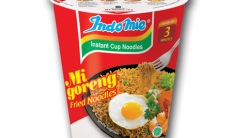Garment sector assured of relaxation in cost of business
The News – International, Pakistan
By Imran Ayub
KARACHI: Country’s garment manufacturers and exporters won government’s assurance on Monday of relaxing cost of doing business in Pakistan with major incentives in power tariff for the export-oriented industry in the proposed National Textile Strategy.
A meeting between garment manufacturers and exporters and officials ended with several proposals from the stakeholders particularly addressed to production cost and market access of Pakistani product mainly to the European markets.
“Officials from sub-committee of National Textile Strategy Committee (NTSC), formed by the prime minister last month, represented the government side,†said a source privy to the meeting.
“The main concern raised by the garment manufacturers relates to the market access and cost of doing business and the sub-committee agreed to incorporate suggestion for the particular issue in the proposals being compiled as final recommendations for National Textile Strategy.â€
The source said that the sub-committee, comprising Tariq Saigol and Syed Masood Alam Rizvi, Federal Textile Secretary, termed the meeting a first attempt to gather industry proposals and suggestions for the National Textile Strategy.
“The sub-committee also held meetings with representatives of polyester fibre and woven textile sector,†said the source. “The two segments of the industry also forwarded their proposals but the garment manufactures and exporters remain the main focus of the government.â€
Prime Minister Shaukat Aziz last week asked the NTSC to submit its final recommendations by December 31, 2014 to work out The National Textile Strategy to make the industry more competitive and sustainable.
Despite the six-billion-dollar investment under balancing, modernisation and replacement (BMR) programme and creation of new capacities over the last six years, growth in textile exports has been slowing down, which pushed the government to design such a policy, which offers incentive to manufacturers and make the industry competitive.
According to the latest figures, compiled by the Federal Bureau of Statistics (FBS), earnings from textile products dropped by 7.10 per cent during July-August to $1.625 billion compared to the corresponding period last year. However, with an initiative, the authorities seem optimistic to get desired results from the National Textile Strategy.
“Today’s (Monday) meeting with the garment manufacturers is first of the series, we plan with different segments of the (textile) industry,†said Syed Masood Alam Rizvi, Federal Secretary, Textile.
“We plan to meet all the stakeholders by November end and compile their proposals to put before the NTSC, which has been assigned by the PM to finalise recommendations by December 31, 2014.â€
He said the sub-committee was holding meetings with different segments of the industry to get clear picture of challenges being faced by the local manufacturers, who were facing tough competition from Bangladesh and China.
“It’s a kind of brainstorming, which would give better understanding of the issues and recognising obstacles obstructing potential growth of the sector,†said Rizvi. “We would be able to forward industry’s recommendations within next one month to the NTSC, which is headed by the federal minister, textile.â€
The proposed textile strategy will encompass the production of 20.7 million bales of cotton by 2015, production of standardised and clean cotton, balancing the value-chain by enhancing the weaving capacity, issues related to technological up-gradation throughout the value-chain product diversification, and development of compatible infrastructure.
The proposed broad features of the strategy also include providing a level-playing field to the domestic industry vis-‡-vis its competitors (countries), improved transport and communications infrastructure and network, skill development and capacity building of the existing and the future human resource and studying trends in the international market to cater for the high end-product markets, especially women garments.





